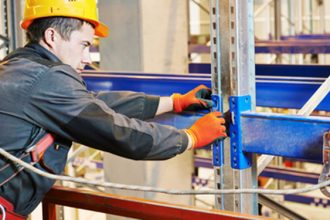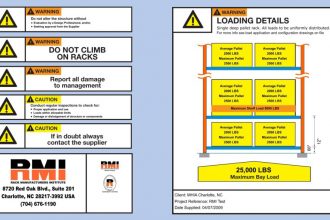Awareness Of The Importance Of Rack System Safety On The Rise
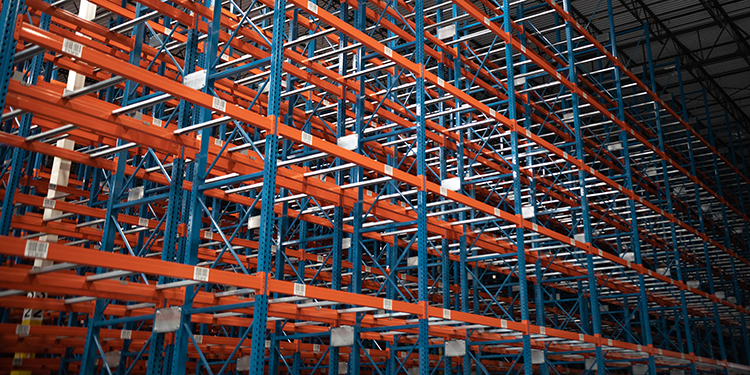
Lurking amid the corners of the Internet are videos of catastrophic rack failures in warehouses and distribution centers. Simultaneously horrifying and mesmerizing, the worst rack-related accident footage captures chain reactions of collapse. Yet, by documenting such hazardous and costly accidents and sharing them, these videos contribute to rising awareness of the importance of rack system safety.
The videos demonstrate to the public that rack systems—which are often taken for granted—can be dangerous to workers. Further, they lead to massive financial losses of lost product, potential facility damage, and unplanned downtime. Those factors have, in turn, led to more sophisticated industry-wide approaches to rack system safety.
“Failures don’t happen very often, but when they do, they can be catastrophic,” said John Krummell, President and CEO of Advance Storage Products, a member of the Rack Manufacturers Institute (RMI).
John Schmidt, CEO of RMI member Rack Builders, agreed. He pointed out RMI’s prominent role in increasing education about rack safety issues. Part of the organization’s purpose is helping to ensure that rack safety issues are no longer overlooked or misunderstood.
“In the last few years, there has been a lot more public awareness, owner awareness, and user awareness of the importance of rack safety,” observed Schmidt.
Bespoke Engineering Supports Rack System Safety
Krummell said a particularly important development is the broader recognition today that a pallet rack system is an engineered structure designed to suit each unique facility. That is, users can’t point-and-click to order stock components of industrial steel storage rack from a website, install it, and expect it to be safe.
“You really need to have engineering input when you are scoping and setting a system up,” advised Krummell.
“The big trend the last 10 years is the focus on designing systems engineered to each specific job site,” he noted. “One of the things RMI is in the process of doing in the industry is limiting the use of load tables and catalog-type approaches. Because in the majority of cases, the new building codes don’t allow for that.”
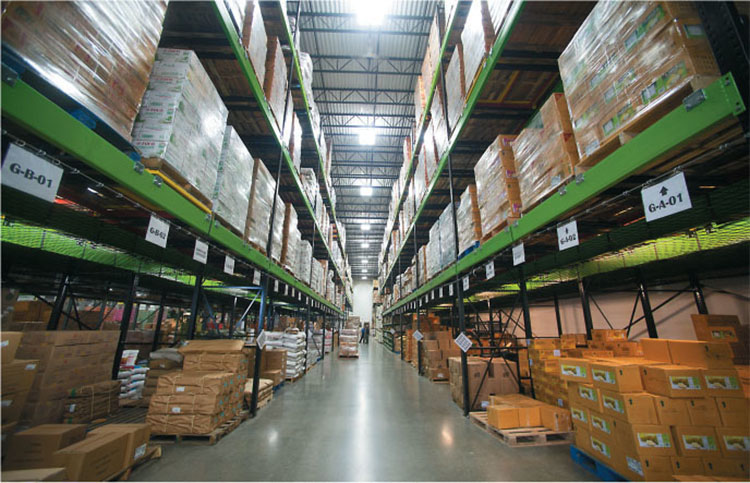
The Role of Building Codes in Rack System Safety
Schmidt added that municipalities’ greater prioritization of developing and enforcing codes related to racks has also contributed to the increasing emphasis on safety. These building codes, often based on RMI standards, have grown more comprehensive and detailed over the years.
Further, more owners are adhering to those codes. For example, Schmidt noted that it has become much less common to see the construction and installation of racks without a permit.
“As codes have evolved and have gotten stricter, people are gaining a better understanding of how seismic events affect racks. They’ve seen that you can’t just eyeball it—you can’t just go off a published load table,” Schmidt said. “Each unique situation’s engineering must account for the configuration of the rack and the environmental conditions of the site. This is especially true in high-seismic areas like California.”
Emphasis on Rack System Safety Growing Alongside Installation Sizes
Additionally, as the sheer size of rack systems today continues to grow, so too have the potential risks associated with a failure. That also underscores an increased emphasis on rack system safety.
“As technology has improved, as lift equipment has gotten higher and bigger, the racks have gotten taller. You’ve got very heavy loads going way up in the air,” Schmidt said. “I think that has made it sometimes painfully apparent to some owners that safety is a huge issue.
Schmidt added that more sophisticated technology has brought fresh capabilities to better analyze and design rack structures. It has also led to more intricate codes. These now take into consideration a range of conditions and parameters not previously considered with the same level of detail. For example, how a structure behaves in a seismic event.
Any system—new or used—should comply with building codes and RMI codes, Krummell said. Further, a qualified professional should oversee the design of the system to ensure it meets those codes.
“Working with an RMI manufacturer or their approved distributors helps to ensure the quality of the rack systems,” he explained. “This also helps to avoid the risk of collapse that could come with a rack not built to engineering standards.”
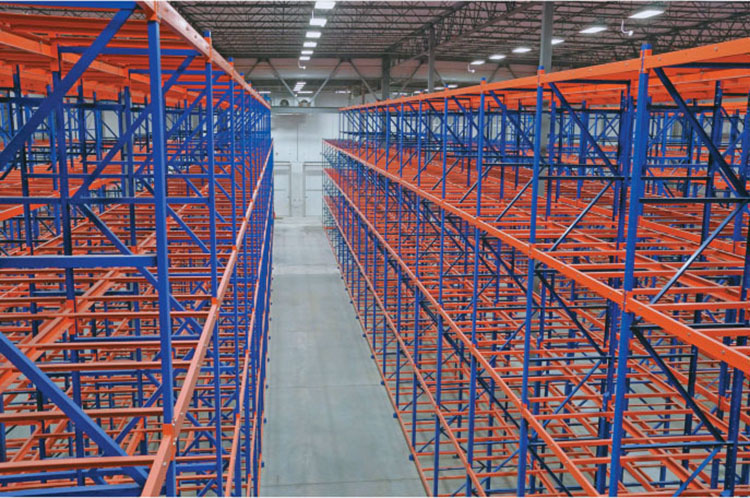
Regular Rack Inspections are Key to Safety
In addition, a regular inspection program is critical to safety efforts, Krummell said. Warehouse operators should routinely verify that the system has not sustained damage or experienced modifications.
Krummell recommends a quarterly inspection schedule. More frequent inspections may be required, as detailed in section 6.2.2. of RMI’s Considerations for the Planning and Use of Industrial Steel Storage Racks document. This includes a careful assessment of damaged components to determine if repair is possible or replacement necessary. It is not always possible to restore some damaged racks to a safe condition. However, owners often allow their maintenance departments to make repairs to damaged racks without realizing how insufficient—and subsequently dangerous—those efforts might be, Krummell said.
Warehouse operators can’t assume they can do things the way they always used to or that their rack system conditions are safe because “nothing’s happened yet.” Both are responses Krummell has heard from operators when advised of unsound racking conditions in their facilities.
“Our industry really made a concerted effort to get RMI standards incorporated into building codes, and that’s helped to enforce a common approach to rack systems across the country,” Krummell said.
“It’s also helped to force end users, resellers, and the whole market to follow the best practices. And as codes have become more accepted, more and more municipalities are demanding them,” he concluded. “It’s created a much better approach to rack safety and ultimately created safer working environments.”
Learn More About RMI’s Efforts to Enhance Rack System Safety
Want to learn more about how to improve rack system safety in your operation? A recent article in MHI Solutions magazine, “Rack Systems Safety Starts with Recognition that Every Installation Is Different,” contains additional details. Further, the members of RMI supply industrial steel storage racks and related structural systems worldwide and across virtually every major manufacturing and distribution sector. Visit their website at mhi.org/rmi.

